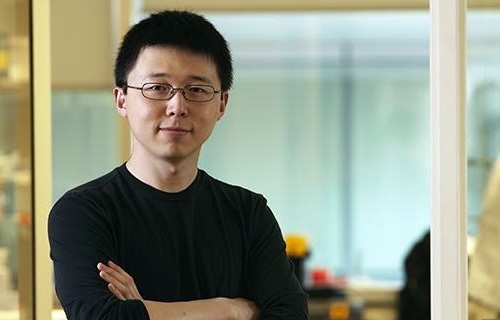1 December 2015. Medical and engineering researchers enhanced emerging CRISPR-Cas9 genome editing techniques, reducing erroneous off-target edits with an engineered enzyme. The team from the Broad Institute, a medical research center at Harvard University and Massachusetts Institute of Technology, and the McGovern Institute for Brain Research at MIT, published its findings today online in Science Express, an online journal of Science magazine (paid subscription required). The paper was also discussed today by senior author Feng Zhang at the International Summit on Human Gene Editing in Washington, D.C.
Zhang, with colleagues at Broad Institute and elsewhere, was one of the first researchers to use clustered, regularly interspaced short palindromic repeats or CRISPR, a technology based on bacterial defense mechanisms that use RNA to identify and monitor precise locations in DNA. The actual editing of genomes with CRISPR uses an enzyme known as CRISPR-associated protein 9 or Cas9. With this approach to CRISPR, RNA molecules guide Cas9 proteins to specific genes needing repair, making it possible to address root causes of many diseases.
With Cas9, however, the process can sometimes make additional breaks in the genome that do not support the intended target, increasing risks of altered gene expressions and mutations causing disease. Various attempts to improve the accuracy of Cas9 edits, say the authors, come with drawbacks and trade-offs. Thus a need arises for enhancements to Cas9 that improve its accuracy without reducing the simplicity or efficiency of CRISPR.
During editing, negatively-charged DNA is attracted to positively-charged amino acids in Cas9, causing some of the Cas9 enzyme to make other, unintended breaks in the genome. In nature, Cas9 enzyme is produced by bacteria to defend against invading viruses. The Broad-McGovern team analyzed Cas9 produced by Streptococcus pyogenes bacteria, with some 1,400 amino acids, and identified 3 amino acids with a positive charge as the culprits.
The researchers then engineered Cas9 to create mutations in those amino acids, changing their charge from positive to neutral. The team tested the engineered Cas9 enzyme, called enhanced S. pyogenes Cas9 or eSpCas9, and found it sharply reduced the rate of erroneous breaks, to the point of being undetectable.
Zhang is a founder of Editas Medicine, a spin-off company from Broad Institute, commercializing genomic editing technologies licensed from labs at MIT, Harvard, and elsewhere. As reported in Science & Enterprise, the company was founded in November 2013, and immediately attracted $43 million in venture financing. In March of 2015, Editas demonstrated its technology with repairs of mutations causing sickle cell disease, an inherited blood disorder.
Zhang’s lab is making eSpCas9 available to the research community at large, despite these commercial interests. In September, also reported in Science & Enterprise, Zhang and colleagues published a simplified version of Cas9 called Cpf1, which Broad Institute and MIT offered as well to researchers and commercial developers through non-exclusive licenses.
Read more:
- USC, Biotech Edit Genes in Stem Cells for HIV Therapy
- Gene Editing Licensed for Inherited Disease Treatments
- Gene Editing Boosts Red Blood Cell Output in Lab
- Simpler Genome Editing Process Discovered
- Seattle Children’s, Biotech Collaborate on Gene Editing
* * *


 RSS - Posts
RSS - Posts
You must be logged in to post a comment.